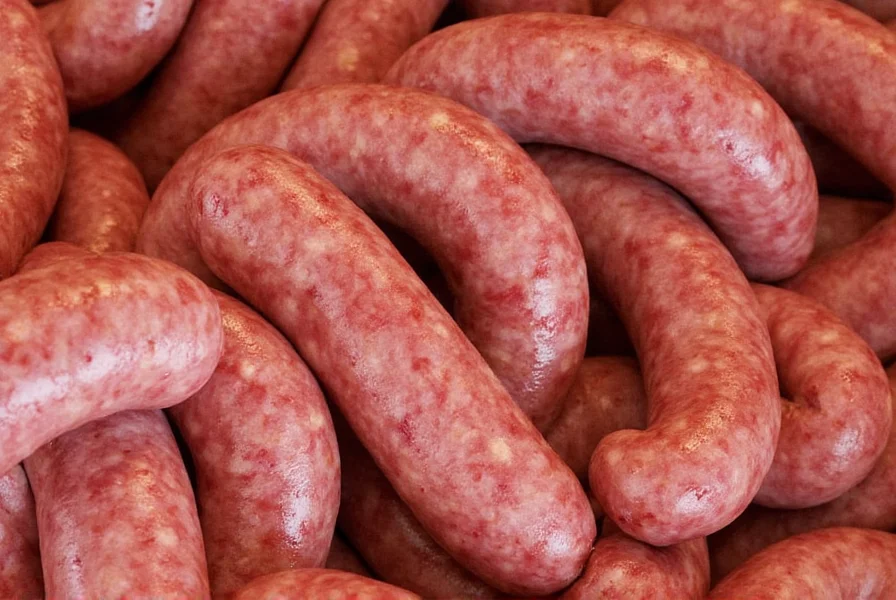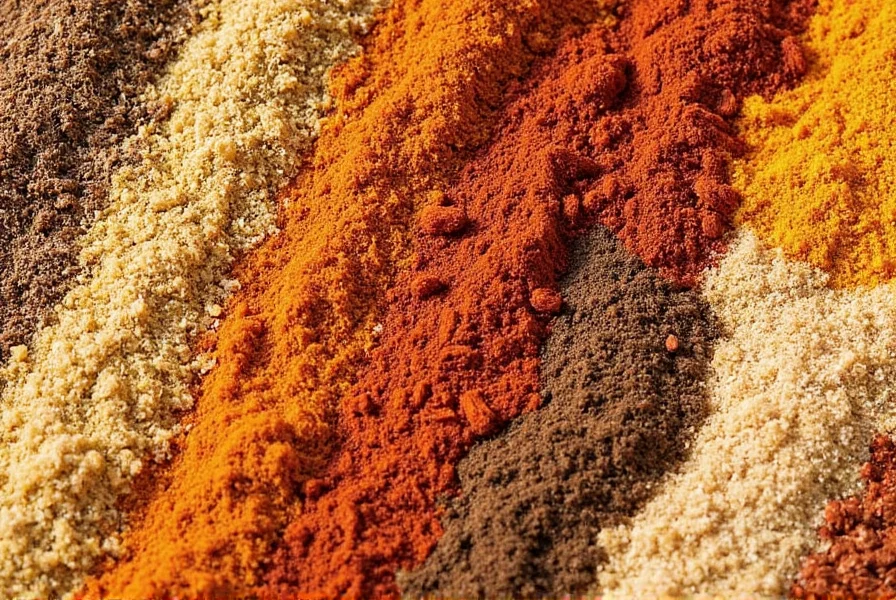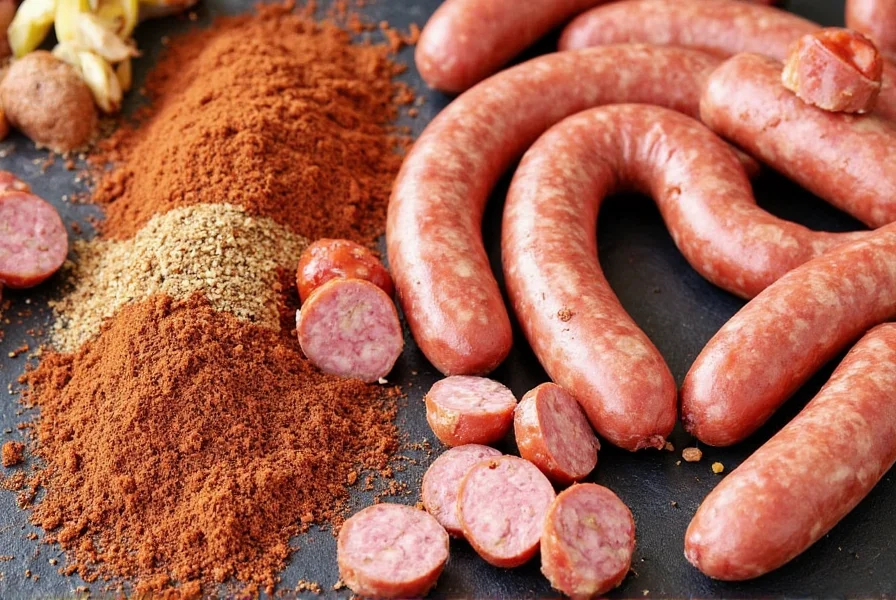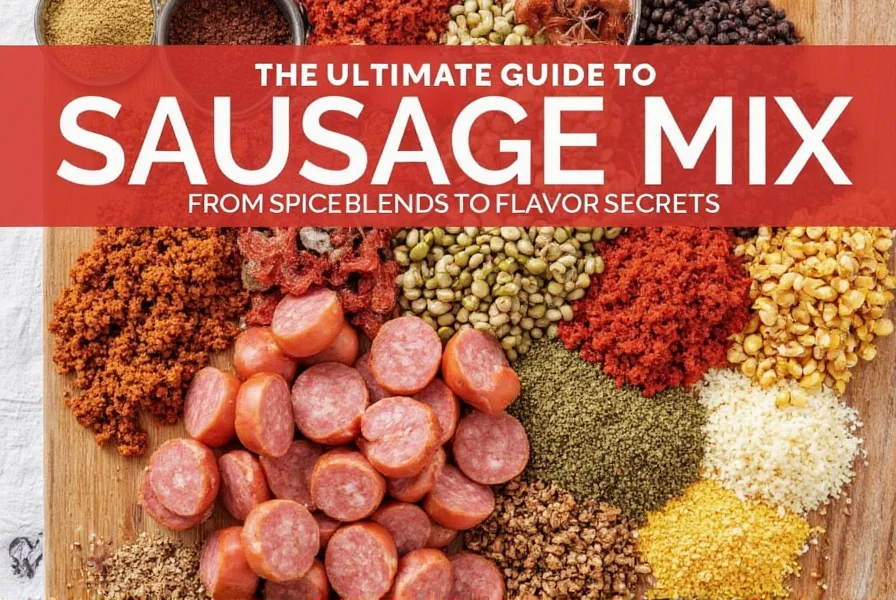What is sausage mix? Sausage mix is a carefully balanced blend of ground meat, fat, and seasonings that forms the foundation of delicious sausages. Whether you're making bratwurst, chorizo, or Italian sausage, the right spice combination is crucial for flavor and texture. In this expert guide, we'll cover everything you need to know to create your own sausage mix at home, including essential spices, global recipes, pro tips, and buying advice. All information is based on USDA food safety guidelines and professional culinary expertise.

Essential Spices for the Perfect Sausage Mix
Sausage making is part science and part art. The foundation of any great sausage lies in its seasoning. Here are some of the most important spices you'll find in classic sausage blends, with insights from the American Meat Science Association:
- Fennel Seeds: Iconic in Italian sausage, fennel brings a sweet, licorice-like flavor. According to USDA guidelines, fennel is essential for authentic Italian sausage profiles.
- Garlic Powder: A must-have for depth and warmth. Fresh minced garlic can also be used but may affect texture.
- Paprika: Adds both color and mild heat (use smoked paprika for extra complexity). Smoked paprika is recommended by Spanish culinary experts for authentic chorizo.
- Black Pepper: Balances sweetness and adds bite. Freshly cracked pepper provides superior flavor compared to pre-ground.
- Coriander: Offers citrusy notes that complement fatty meats beautifully. Essential in German bratwurst recipes.
- Marjoram & Sage: Popular in German and Eastern European recipes for earthy warmth. These herbs are critical for traditional sausage authenticity.
Different regions and types of sausages call for different ratios and additions. Here's a detailed comparison table based on professional culinary standards:
| Type of Sausage | Main Spices | Flavor Profile |
|---|---|---|
| Italian Sweet Sausage | Fennel, Garlic, Marjoram | Sweet, herbal, slightly spicy |
| Chorizo (Spanish) | Smoked Paprika, Garlic, Oregano | Smoky, savory, slightly bitter |
| Bratwurst | Coriander, Nutmeg, White Pepper | Earthy, aromatic, mildly sweet |
| Andouille | Cayenne, Black Pepper, Thyme | Spicy, smoky, bold |

Sausage Mix Recipes from Around the World
Let's take a quick culinary tour and explore how different cultures use their signature spices to create iconic sausages, based on traditional recipes from reputable culinary sources:
Classic Italian Sweet Sausage Mix
- Fennel seeds – 1 tbsp
- Garlic powder – 1 tsp
- Crushed red pepper flakes – ½ tsp
- Dried marjoram – ½ tsp
- Salt – 1 tsp
- Black pepper – ½ tsp
Spanish Chorizo Mix
- Smoked paprika – 2 tbsp
- Garlic powder – 1 tsp
- White wine vinegar – 1 tbsp
- Oregano – ½ tsp
- Sea salt – 1 tsp
German Bratwurst Seasoning
- Ground coriander – 1 tsp
- Nutmeg – ½ tsp
- White pepper – 1 tsp
- Mace – ¼ tsp
- Mustard seed – 1 tsp
Pro Tips for Crafting Your Own Sausage Mix at Home
Creating your own sausage mix can be as easy as mixing spices or as complex as curing and smoking. Here are some tips to help you make delicious sausage at home, based on USDA food safety guidelines:
- Beware of Salt Content: Use around 1.5–2% salt by weight of the meat to preserve and enhance flavor without overpowering it, as recommended by the USDA.
- Test Before You Commit: Make a small batch first. Cook a small patty and taste it before proceeding.
- Add Some Fat: A 70:30 meat-to-fat ratio is ideal for juiciness and texture, according to professional butchers.
- Use Cold Ingredients: Keep everything cold to avoid emulsifying the fat too early, preventing bacterial growth.
- Uniform Grinding: Grind the meat twice for consistent texture and better binding.
- Hydration Matters: Adding ice water or broth helps bind the mixture and prevents dryness, maintaining food safety standards.

Buying Guide: Best Sausage Mixes in the Market
If you're not ready to craft your own sausage mix from scratch, don't worry — there are plenty of high-quality pre-made mixes available. Below are some top-rated sausage mix brands and what makes them stand out, based on professional culinary reviews and user feedback:
| Brand | Features | Best For | Recommended Uses |
|---|---|---|---|
| Hi Mountain Sausage Seasoning | No nitrates, natural cure, includes celery juice powder | Home sausage makers, jerky lovers | Smoked sausages, snack sticks |
| Butcher's Broom Sausage Blend | All-natural, gluten-free, no fillers | Health-conscious cooks | Breakfast links, grilled patties |
| McCormick Gourmet Italian Sausage Seasoning | Pre-mixed blend, brand name reliability | Busy cooks, beginners | Pasta sauces, pizza toppings |
| Rainbow Heritage Farms Chorizo Mix | Uses smoked paprika and authentic Mexican spices | Taco nights, Tex-Mex dishes | Soft tacos, chorizo scrambled eggs |
Frequently Asked Questions About Sausage Mix
What is the best meat for sausage mix?
Pork shoulder is the most commonly used due to its perfect balance of fat and flavor. According to USDA guidelines, pork shoulder contains 20-30% fat which is ideal for sausage making. However, beef, lamb, chicken, and even game meats can be used depending on the recipe and desired outcome. For leaner options, consider 90% lean beef with 10% added fat.
Can I substitute spices in a sausage mix?
Absolutely! Feel free to tweak flavors to suit your palate. Just remember that some substitutions may change the texture or cooking behavior. For example, fresh herbs can be used instead of dried, but you'll need to use about three times the amount of fresh herbs to achieve the same flavor intensity as dried. However, avoid substituting core spices like fennel in Italian sausage as it fundamentally changes the flavor profile.
How long does homemade sausage last?
Fresh sausage should be refrigerated and consumed within 1-2 days. If smoked or cured properly, shelf life can extend up to several weeks or even months when frozen correctly. Always look for signs of spoilage like off odors, slimy texture, or discoloration. The USDA recommends cooking fresh sausage within 2 days for maximum safety.
Is sausage mix healthy?
It depends on how it's made. Homemade sausage allows control over ingredients like sodium, fat content, and preservatives. Choosing leaner meats and reducing added salt can make it healthier. Many traditional sausages are high in fat and sodium, but you can create versions with turkey, chicken, or plant-based alternatives for healthier options. The American Heart Association recommends limiting processed meats to 1-2 servings per week for heart health.
What's the ideal meat-to-fat ratio for sausage mix?
The classic ratio is 70% lean meat to 30% fat, which provides optimal juiciness and texture. For leaner sausages, you can go as low as 80:20, but going below 20% fat may result in dry, crumbly sausage. Different sausage types have traditional ratios - for example, Italian sausage tends to be richer (65:35) while breakfast sausage might be leaner (75:25). USDA guidelines specify that sausage fat content should be between 20-30% for food safety and texture.
Can I make sausage mix without casings?
Yes! You don't need casings to enjoy sausage mix. You can form it into patties for grilling, use it as a filling for dishes like stuffed peppers or manicotti, or crumble it for use in pasta sauces, soups, and casseroles. Many traditional dishes like Greek moussaka or Swedish meatballs use sausage-style mixtures without casings. This is actually recommended by chefs for easier cooking and better flavor distribution.
What are the most common mistakes when making sausage at home?
The most common mistakes include: using warm ingredients (which causes fat to smear), incorrect salt measurements, overmixing the meat, using improper meat-to-fat ratios, and not testing seasoning before committing to a full batch. Remember to keep everything cold, measure accurately, and always test a small patty before making the entire batch. The USDA warns that improper handling can lead to foodborne illnesses.
How do I know when my sausage is properly cooked?
Use a meat thermometer to check internal temperature. Pork sausage should reach 160°F (71°C), while poultry-based sausages need to reach 165°F (74°C) according to USDA food safety standards. The sausage should be firm to the touch with clear juices (not pink). Avoid cutting into sausages to check doneness as this releases precious juices. For safety, always use a food thermometer rather than visual cues alone.
Conclusion
A good sausage mix is more than just a blend of meat and fat — it's a symphony of spices, textures, and aromas that can transform a humble protein into a feast-worthy centerpiece. Whether you're grinding your own at home or selecting a quality premade blend, understanding the role of each ingredient gives you the power to customize every bite. Always follow USDA food safety guidelines to ensure your homemade sausage is both delicious and safe to eat.

Remember, the journey of a thousand sausages begins with a single spice — and proper food safety practices!










 浙公网安备
33010002000092号
浙公网安备
33010002000092号 浙B2-20120091-4
浙B2-20120091-4